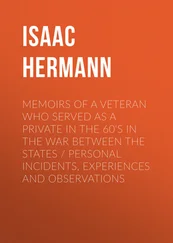5 5 Harvard Business Review Analytic Services, “The Age of Personalization: Crafting a Finer Edge,” Pulse Survey, August 2018, available at https://hbr.org/resources/pdfs/comm/mastercard/TheAgeOfPersonalization.pdf, accessed June 28, 2021; Pedro S. Coelho and Jörg Henseler, “Creating Customer Loyalty through Service Customization,” European Journal of Marketing 46, no. 3/4 (2012): 332–356; Pine, Peppers, and Rogers, “Do You Want to Keep Your Customers Forever?” pp. 103–104.
6 6 Thomas L. Friedman, “And Now for a Bit of Good News …,” Sunday Review, New York Times, July 19, 2014, available at https://www.nytimes.com/2014/07/20/opinion/sunday/thomas-l-friedman-and-now-for-a-bit-of-good-news.html, accessed August 17, 2021.
7 7 See Dave Frankland, “The Intelligent Approach to Customer Intelligence,” Forrester Research, Inc., available at www.forrester.com.
8 8 Merriam Webster Online Dictionary, “relationship,” www.merriam-webster.com/dictionary/relationship, accessed August 17, 2021.
9 9 See Don Peppers and Martha Rogers, Ph.D., Extreme Trust: Turning Proactive Honesty and Flawless Execution into Long-Term Profits (New York: Portfolio/Penguin, revised 2016); Stephen M. R. Covey and Greg Link with Rebecca R. Merrill, Smart Trust: The Defining Skill That Transforms Managers into Leaders (New York: Free Press, 2012); Chris Brogan and Julien Smith, Trust Agents: Using the Web to Build Influence, Improve Reputation, and Earn Trust (Hoboken, NJ: John Wiley & Sons, 2009); and Charles H. Green, Trust-Based Selling: Using Customer Focus and Collaboration to Build Long-Term Relationships (New York: McGraw-Hill, 2006).
10 10 Jagdish N. Sheth and Atul Parvatiyar, “Relationship Marketing in Consumer Markets: Antecedents and Consequences,” Journal of the Academy of Marketing Science 23, no. 4 (1995): 265. See also Atul Parvatiyar and Jagdish N. Sheth, eds., Handbook of Relationship Marketing (Thousand Oaks, CA: Sage, 1999).
11 11 James G. Barnes, Secrets of Customer Relationship Management (New York: McGraw-Hill, 2001).
12 12 Before about 2016, many referred to what we call here “emotional loyalty” as “attitudinal loyalty.” But these days and going forward, the common and most-accepted term is “emotional loyalty.”
13 13 Thanks to Doug Pruden ( http://customerexperiencepartners.com), Esteban Kolsky ( https://estebankolsky.com/), Wim Rampen ( https://wimrampen.com/), and Mark Ratekin ( https://walkerinfo.com/) for their insights provided in comments on our Strategy Speaks blog post: http://www.peppersandrogersgroup.com/blog/2009/10/customer-loyalty-is-it-an-atti.html#more.
14 14 Thanks to former Peppers & Rogers Group consultant Ozan Bayulgen for this very useful analogy.
15 15 According to the corporate profile on its website, RBC serves more than 17 million personal, business, public sector, and institutional clients through offices in Canada, the United States, and 27 other countries. Available at https://www.rbc.com/our-company/index.html, accessed August 14, 2021.
16 16 Frederick F. Reichheld and W. Earl Sasser Jr., “Zero Defections: Quality Comes to Services,” Harvard Business Review 73 (September–October 1990): 59–75. Fred Reichheld is the father of the Net Promoter Score (NPS), which is a measure of the quality of a company's customer relationships and indicator of profitability. The score is based on what Reichheld calls the ultimate question: “Would you recommend us to a friend?” Customers can be sorted into detractors or promoters based on their answers, and percentages of each category give the NPS. Reichheld lays out the Net Promoter System and gives many examples of standout companies that have high profitability and high Net Promoter ratings in his book The Ultimate Question 2.0: How Net Promoter Companies Thrive in a Customer-Driven World (Boston: Harvard Business Review Press, 2011), written with Rob Markey.)
17 17 Authors' note: This point is not without controversy. Some research has shown that in some instances—especially those where a business is very dependent on one or a very few customers, such as automotive parts makers—a long-term customer has the power to extract so many concessions that the company's margins are squeezed sometimes to the breaking point. But generally, academic research and real-world experience have demonstrated that if a company acquires the right customers, the longer those customers continue to do business, the more profitable they become—for many reasons, especially reduction in churn replacement costs, increasing value to the customer of the relationship, and the positive word of mouth and social networking by a contented or delighted customer. See Peter Fader, Customer Centricity: Focus on the Right Customers for Strategic Advantage (Wharton School Press, 2020); Vinicius Nardi, William Jardim, Wagner Ladeira, and Fernando Santini, “A Meta-Analysis of the Relationship between Customer Participation and Brand Outcomes,” Journal of Business Research 117, September 2020, pp. 450-460, https://doi.org/10.1016/j.jbusres.2020.06.017, accessed October 18, 2021; and Andrei Hagiu and Julian Wright, “When Data Creates Competitive Advantage … and When It Doesn't,” Harvard Business Review, January-February 2020, pp. 94-101.
18 18 According to Phillip Britt, “Customer Service Becomes a Marketing Tool,” Customer Relationship Management: CRM 23, no. 10 (Dec 2019): 20-23, accessed June 12, 2021, available at https://www.destinationcrm.com/Articles/Editorial/Magazine-Features/Customer-Service-Becomes-a-Marketing-Tool-135423.aspx?pageNum=2, loyalty is based more on how customers feel after interacting with customer service, rather than on product or price. Also, in the discussion of what drives customer loyalty, we should not forget that both loyalty and trust (always intertwined) may, for some customers, depend on corporate responsibility. See Eunil Park and Ki Joon Kim, “What Drives ‘Customer Loyalty’? The Role of Corporate Social Responsibility,” Sustainable Development 27, no. 3 (2019): 304-311, https://doi.org/10.1002/sd.1901, accessed June 12, 2021.
19 19 For a different view of the value of loyalty, see Werner Reinartz and Mark Eisenbeiss, “Managing Customer Loyalty to Maximize Customer Equity,” in Handbook of Research on Customer Equity in Marketing, eds. V. Kumar and Denish Shah (Northampton, MA: Edward Elgar, 2015), pp. 139–159; and Werner Reinartz and V. Kumar, “The Mismanagement of Customer Loyalty,” Harvard Business Review (July 2002): 86–94. Reinartz and Kumar's work shows that more loyal customers are not necessarily more profitable as a class, especially using their methodology of one moment in time; but we should also point out that in the case of an individual customer, the more loyalty and the greater share of customer achieved from one customer over time, the more valuable by definition that individual customer will become.
20 20 Authors' note: Some may question the statement “Customers are a company's only source of revenue.” By definition, however, this is literally true. If a company sells products, for example, then the revenue does not come from the products; it comes from the customers who buy them. And if that same company also runs some ancillary businesses—say, renting out unused real estate space or spare capital—then those who make lease payments or interest payments are also customers.
21 21 Philip Kotler and Milton Kotler, Market Your Way to Grow: Eight Ways to Win (Hoboken, NJ: John Wiley & Sons, 2013); Philip Kotler, Kotler on Marketing (New York: Free Press, 1999).
22 22 Fred Reichheld, “Learning from Customer Defections,” Harvard Business Review 74, no. 2 (March–April 1996): 87–88.
23 23 Reichheld, The Loyalty Effect.
24 24 Authors' note: It is generally a challenge to agree on what we all mean by “customer satisfaction,” And that is one of the main reasons most companies now use updated measures of customer engagement and value. See Richard L. Oliver, Satisfaction: A Behavioral Perspective on the Consumer (New York: Routledge, 2015). Additionally, Dave Power III has defined customer satisfaction as measuring the difference between what the customer expects to get and what they perceive they get. We are becoming more and more capable of measuring what Pine and Gilmore call “customer sacrifice,” which is the difference between what the customer wants exactly and what the customer settles for. B. Joseph Pine and James Gilmore, “Satisfaction, Sacrifice, Surprise: Three Small Steps Create One Giant Leap into the Experience Economy,” Strategy and Leadership 28, no. 1: 18.
Читать дальше












